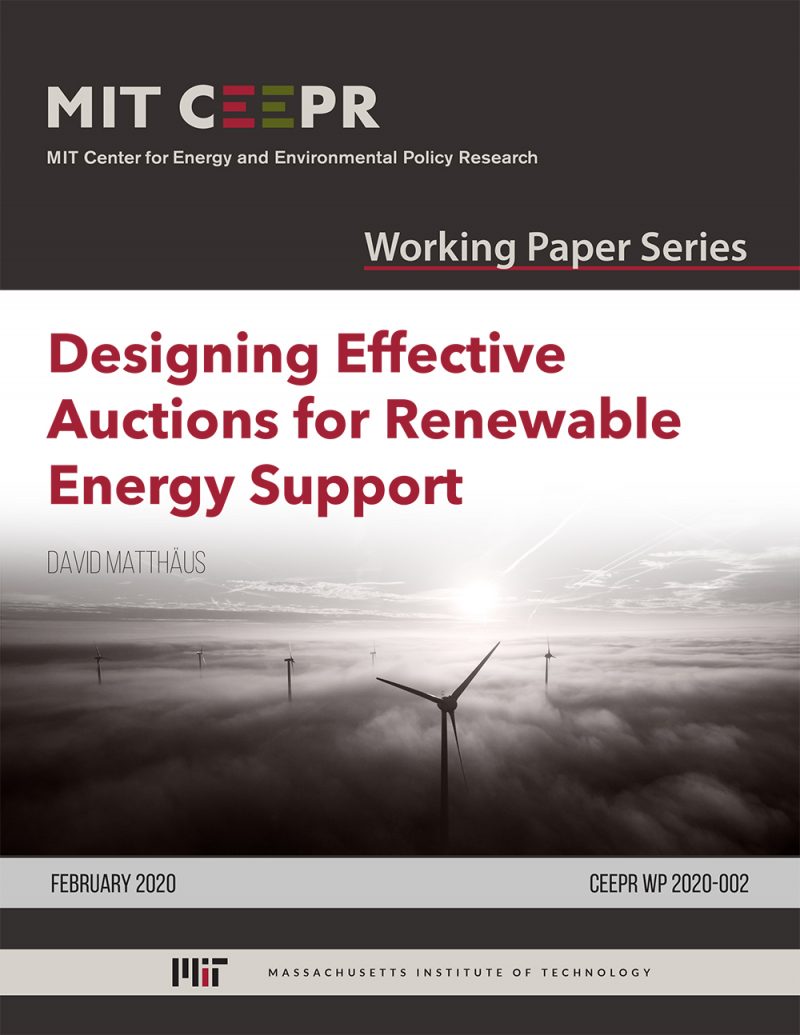Designing Effective Auctions for Renewable Energy Support
David Matthäus
February 2020
Governments use procurement auctions for renewable energy support to stimulate investment in renewable energy. The main challenge in auction design is the balance between cost-efficient procurement and high post-auction realization, i.e., effective procurement. I empirically assess the effect of prevalent auction design elements on effectiveness, using a unique dataset with results of auctions for renewable energy support from 1990 to 2017. I find that pre-qualifications and penalties drive realization rates, while technological banding or the pricing rule do not affect effectiveness. The former is in line with existing theory, while the latter sheds new lights on auction models and case studies discussing auction outcomes, as literature has thus far broadly agreed on a major influence of all design elements. According to my results, policy makers which focus on high realization rates should include pre-qualification measures and penalties into their design. Importantly, they gain more degrees of freedom regarding other design features to tailor renewable energy auctions to their country. This freedom is advantageous in view of a large variety of countries adapting renewable energy auctions.
Keywords: Renewable Energy Support, Auction Design, Climate Change



